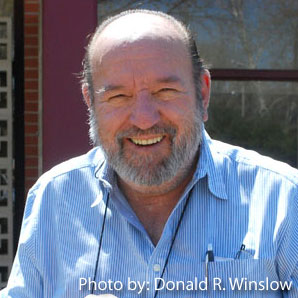 From: NPPA.org
From: NPPA.org
“Bob Brandon, a two-time national Emmy Award-winning television photographer who also twice won the National Press Photographers Association’s Ernie Crisp Television News Photographer of the Year title, died last night in New York.
‘The word legend is sometimes overused, but in Bob’s case it was the real thing,’ retired TIME magazine photojournalist Dirck Halstead said today. ‘He and Darrell Barton were the best in the business.’ ”
Read more at: NPPA.org
Comments on the b-roll.net FORUM
___________________________________________
From: ShootLikeaPro.tv
In Bob’s own words:
I began my career when film was the medium for visual communication on television. My first camera was a hand- wound 16-mm film camera made by Bell & Howell called the 70DR. I shot black-and-white film because color film was not yet available for use on television. The industry graduated from black-and-white to color in the late 1960s and from film to video in the mid-1970s.
Each advancement in equipment brought a new camera for me to learn. I would spend countless hours fiddling with the knobs and switches until I could operate them blind- folded. New cameras usually meant new lenses, and I would spend equal amounts of time learning the capabilities and limitations of the lens. The photographer must become one with the lens because it is through the lens that he sees life. He can only record images the lens is capable of capturing.
When I worked for KPRC Television in Houston, Texas, I would occasionally ride the ferry from Galveston to the mainland, about a 30-minute trip. I would haul the camera to the stern of the boat where the seagulls followed, soaring and dipping to the water in search of food. I would zoom in for a close-up on one gull and attempt to follow it wherever it flew. The flight of a seagull, or any bird for that matter, is notoriously hard to predict. So in my attempt to follow the bird, I was not only learning to anticipate its flight but also reacting smoothly to the wild turns. I would also attempt to keep the bird in focus as it came nearer or flew farther away. At first the movements are hard to coordinate, but with practice they become one fluid connection of framing and focus.
I tell this story to illustrate two important points: The first is that the only way you can become better than an ordinary home-movie shooter is to practice, practice, practice with the camera. The second important point is that as the photographer, you must know the camera, all its attributes and foibles, before your practice will be beneficial. Let the camera become like a third hand, an instrument so familiar that thinking about the operation of it isn’t necessary. It frees the mind to concentrate on the story. I frequently keep my camera in the car seat beside me, at the ready, in case I see something interesting I would like to record. In the old film days I also kept my camera in the car, but stopping to shoot something was more complicated. Because the lens had to be manually adjusted, I would rest my hand on the aperture and adjust it to the outside lighting conditions as they changed. When a cloud obscured the sun, I would open the aperture by one f-stop. When the sun returned, I would close it one f-stop.
I required total concentration to do a good job. I have included other personal stories in this book in the “Pro Tip” and “A Story from the Field” boxes to inspire, instruct, and maybe even entertain you. But remember, you don’t have to be a seasoned photographer to tell a good visual tale with your camera. Any story given the benefit of a moment’s pause for thought and preparation before shooting is going to be a better story.
Comments on the b-roll.net FORUM

[…] KDVR ran this story Friday night (12/11) on Bob Brandon’s fight with kidney failure. Brandon died this week in NY. […]